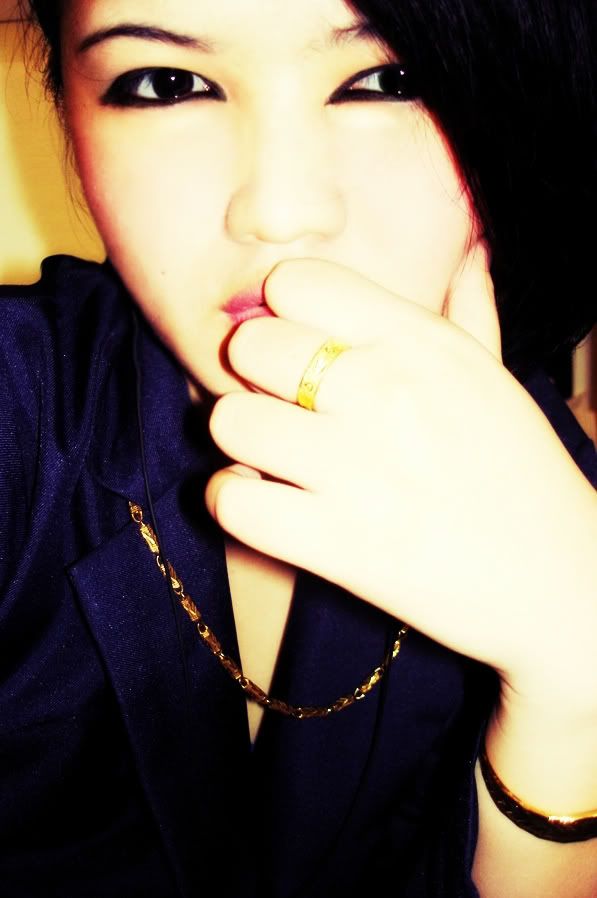 ADA 101
ADA 101Design Communication 1
:Chapter 4:
Rendering Techniques
This technique is a skill
on how a person can interpret
his/her surroundings into a cartridge paper
by using and mixing different types of
rendering techniques.
Sometimes it allows
a person to see a picture
in various forms.
Rendering techniques
can be divided into 20 skills.

1. Two-tone contour line :
this technique separates the value
of an object into two tones.

2. High contrast
The high contrast technique uses
black and white
with no intermediate tones to create forms.
All values are represented by either black or white.

3. Ten- tone contour line:
Ten different values are identified on an object,
and a closed contour line
is placed around each area.

4. Monotone:
The monotone technique requires a marker
of only one value of a colour.
By applying several coats with the same marker;
a variety of darker value can be achieved.
The darker the value desired,
the greater the number of coats which must be applied.

5. Monochromatic
In the monochromatic technique,
a single colour and all its value
are used to finish a rendering.
This is more effective than the monotone technique
because it produces greater value contrast.

6. Photo-rendering study
is designed to train the artist
to see the value changes
and to record these in a rendering.

7. Collage
In general there are two types of collage.
One consists of little pieces of paper
of different colour, tones, and values
that are glued closely together to form the desired image.
The other is photo montage
in which entire forms (trees, figures, cars and etc)
are cut out and positioned.
These techniques represents
substantial investment in time, with minimal costs.
Collage is best for artwork
rather than presentation drawings for the client.
It is extremely helpful in recognizing
the many subtle changes in colour
and value that exist in any given form.

8. Continuous line
Continuous line represents
perhaps one of the most
important developmental exercises
in strengthening one’s drawing skills.
It enhances one’s ability
to draw confidently, boldly and loosely.
And it stimulates the right side of the brain.

9. Construction line
Construction line technique
is used to explore and reveal the structure of a form.
This technique is a quick way
to sketch or plot a schematic design.
It is often used as an approach
to a more elaborate final drawing.

10. Positive / Negative
The positive / negative technique,
like the continuous line technique,
teaches the artist to see and reproduce objects clearly.
It forces the artist to visualize
design elements as a whole, not in parts,
by reducing the drawing
to positive space (the object)
and negative space (the page or background).
Details are eliminated and the artist is then able
to concentrate exclusively on the form and its proportion.

11. Punch line
The punch line is also known as the profile line.
It is a series of line weights
used to accentuate targeted forms.
Punch lines add emphasis to elements in the drawing
and bring them forward.
They differentiate the various elements
and give the appearance of depth.
This technique is suitable for quick sketches in pencil
or felt-tip pen or for high-quality drawing in pen and ink.

12. Border composition
This technique focuses on the outline of forms
within the drawing and their relationship
to each other and to the edge of the page.
No values are represented;
instead, line (usually a closed contour line) is used
to edges of the object off the edge of the page.
This technique can enhance a line drawing
and turn an otherwise marginal work
into a successful rendering.

13. Abstract illustration
Abstract illustration is used in graphics arts
but never as presentation drawing.
Closely related to the contour line technique,
abstract combines closed contours
with areas of solid colour.

14. Tone value
Tone value technique
uses value instead of line to delineate forms.
It is considered to be the most lifelike technique,
representing things as we actually see them.
It is based on a solid understanding of light
and its characteristics, including shade and shadow.
Tone value drawings are usually highly prized
as a final presentation graphic for the client.

15. Line value
Line value drawings are renderings in line.
It is used extensively by the architectural professions
as it is fast and can make
the product extremely appealing to clients.
It is especially recommended for
preliminary presentations and quick studies,
although in a refined form
it is very suitable for final graphics.

16. Tone / line value combined
Combining tone and line value drawings
offers the greatest flexibility
and is preferred by many professionals.
It incorporates the best qualities of each
and can be used with variety of techniques.

17. Pointillism
Pointillism, or “stippling”,
means rendering value changes with dots.
This technique though somewhat time consuming,
can give the drawing a very soft
and refined appearance.
It is most appropriate for black and white reproduction,
although by using coloured inks or pens
a coloured drawing can be produced.

18. Vertical / Horizontal line
Vertical and horizontal line technique
create form and value with parallel lines.
As in pointillism,
shapes are identified through value changes
rather than outline.
Both vertical and horizontal line techniques,
which use pen and ink most often,
are very time consuming,
but allow for interesting results,
particularly when viewed from a distance.

19. Cross hatching
Cross hatching uses crossed lines
to identify value changes and forms.
Pencil or pen and ink are the most appropriate mediums.
While cross hatching is extremely time consuming,
it can result in a superb final presentation drawing.

20. Computer application
Computer graphics has become very popular in recent years.
Although it takes time to master,
the results can be very impressive.
Computer application in graphics
has both advantages and disadvantages.
The advantages include allowing artists
to manipulate their work without fear of ruining the original,
to print graphics with smooth, crisp lines and edges,
and to experiment with colour quickly and easily.
Computer aided design programs
allow one to view the space in three dimensions
and to see the design in a walk-through
sequence of the spaces.
Once all possible views are examined,
one may choose the angle most suitable
to the final rendering.
The disadvantage of the computer is that
the artist is almost automatically
out into the left-side mode of the brain,
and working on two-dimensional computer screen
can inhibit creativity
and the looseness needed for impulsive,
imaginative renderings.
However, the computer is an important and useful tool,
especially for some of the time consuming tasks.
Its use should be combined with
personal creativity and application
of the design principles.
-------------------------------------------------------
So as for practice
we were told to draw two stones
by using rendering techniques
that we learned.
Somehow I can't show it here
because my scanner
is still not functioning.
When I showed the drawing
to my lecturer, he told me
"you need to work on your contrast"
I was like "Huh? Why?"
and he said "because it looks flat"
hahahahahahhahaha XD
Then I edited the drawing a little bit
to give it it's shape and showed it again.
This time he said "Yes! But it still need some contrast"
I was like "Oh yeah~"
hahahahahahha
So as for our assignment
we had to draw 2 stones again
but on an A2 cartridge paper
which is like damn big!
I just finished the scaling
and rough picture of it.
Hopefully I can finish with
the hatching and contrast on time
(@_@)
Thank You For The Visit!
*bows*

























__THISRES__144273.jpg)

















0 cups:
Post a Comment